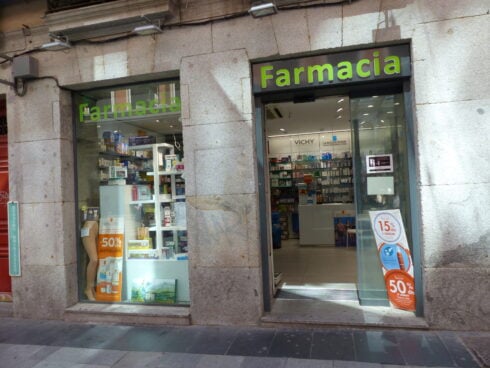Deep in Andalucian olive country, expert olive oil producers perform their age-old alchemy, turning black fruit into gold.
by Arpi Shively
THE charmed life of a ripe Nuñez de Prado olive begins on a crisp late November morning above the town of Baena in Cordoba province, in the heart of Andalucian olive country. Over the next few days, this humble fruit will be transformed into liquid sunshine, to be poured over summer salads and winter vegetables wherever people love good food.
Spain is the world’s leading olive oil producer, its 300 million trees contributing almost one million tonnes of oil each year to the world market. Andalucía itself accounts for 80 per cent of Spanish olive oil output, dwarfing other regions such as Extramadura and Catalonia. Though much of this oil is exported for blending, especially to Italy, many chefs prefer to use the best Spanish oil.
Olives were introduced here by the Phoenicians, and enthusiastically cultivated by the Moors. Indeed, the Spanish names for the olive and its oil, aceituna and aceite, are taken from the Arabic language. Today, herbicides, pesticides and mechanical harvesters have taken some of the hard labour out of the growing and harvesting process. However, you will not find these innovations anywhere on the sprawling 700-hectare estate of the Nuñez de Prado family.
Brothers Don Paco and Don Felipe Nuñez de Prado are the seventh generation of a family that has been making some of Spain’s finest olive oil at the same mill in Baena since 1795. Their passion for purity and quality has won them one of the few coveted DO (Denominacion de Orígen) labels awarded for culinary excellence recognized throughout Spain.
This insistence on time-honoured methods is visible even in the landscape. Instead of the bare red earth carpet of surrounding groves, the ground under the estate’s trees grows lush green, the grass a living proof of Nuñez de Prado’s organic farming methods. Even after the exceptionally cold winter of 2004/5, followed by a punishing drought, a huge hilltop reservoir and sophisticated irrigation system has kept trees and olives in glossy good health.
Instead of the olive trees being beaten with sticks or shaken by mechanical harvesters, the olives are individually picked by hand. Give or take the odd baseball cap and trainers, it is a timeless scene, as the skilled pickers work swiftly and silently; a team of six can strip an average size tree in around 20 minutes. Fallen olives are left on the ground as they might be damaged and spoil the eventual flavour of the oil.
“Making good olive oil is about paying attention to lots of small details,” says Paco Nuñez de Prado, head of the family business and passionate promoter of its olive oil. The estate grows three main types of olive: the picuda, picual and hojiblanca, all picked as they ripen from purple to black. “It is important not to bruise the fruit, otherwise the oil has higher acidity and less delicacy,” adds younger brother Felipe, who is in charge of production.
The olives are taken to a nearby cleaning station. Here, leaves and twigs are separated from the washed fruit and added to a huge compost-heap-in-progress that will nourish the trees next year. From there, the olives arrive at the handsome 18th century family mill a few minutes’ drive away in Baena town. No time is lost in processing the olives before fermentation, another potential flavour-robber, has a chance to set in.
First, the olives are mashed by four 300-tonne granite cones, sculpturally beautiful and not far removed from the original Roman technology. From the crusher, the paste is directed into one of two processes to produce two types of olive oil. For extra-virgin, it is made into a multi-layered sandwich between plastic mats. This is crushed in the gleaming early 1940s hydraulic press, from where the oil runs from floor channels into a series of underground filtration tanks visible through glass trapdoors nearby. After several days of passing through these tanks, the oil is ready for bottling.
The mill’s other product, the Flor de Aceite, is what many food fanatics call “the prime steak” of olive oil. To make this, free-run oil (not crushed but simply allowed to drip from the mashed paste using cutting-edge 19th century technology and gravity) is channeled into its own filtration system. The resulting slightly cloudy liquid – filtering it clear would mean losing some of the flavour – is some of the purest and finest-flavoured olive oil money can buy.
After expert tasting and blending by the Nuñez de Prado brothers, the Flor is bottled by a characteristically low-key assembly line of six men and women at a long table, sealed by hand in scarlet wax imprinted with the Nuñez de Prado logo, and each numbered bottle noted in a big account book whose well-worn ancestors line the shelves above our heads.
The extra virgin, a fine all-purpose oil with a lemony taste and peppery bite, can be used for cooking as well as dressing vegetables, but using the Flor de Aceite for a fry-up would be a crime I dare not even mention to Paco.
With aromas variously described as floral, peppery, herby and even tropical, the Flor is best kept for mopping up with good warm bread, dressing superior salads or adding to the delicious local bread and tomato soup called salmorejo. However, Paco does not disapprove of adding a generous spoonful to a dish of paella, for example. “Good oil improves the flavour of any dish without altering it,” he says. Unlike wine, the flavour of high-quality olive oil does not vary much from year to year. Protected from sunlight and kept between five and 25 degrees Celsius, a good Spanish oil can last as long as three years, though the fruity aroma starts to decline soon after that. Now it is fragrant with hints of apple, burnt orange and almond, the promise of a long hot summer.
Lunch at Nuñez de Prado’s restaurant features almonds fried in extra-virgin olive oil, pork medallions in extra virgin oil with garlic and parsley pesto, followed by oranges in honey and olive oil, and olive oil ice cream. Eccentric perhaps, but to those born and bred in Andalucia’s olive heartland, a fitting celebration of a national treasure.
Click here to read more News from The Olive Press.






Hi,
You might be able to help me , I am trying to source black olive oil . Is there any such thing or is it olive oil presed from fully ripe black olives . I would be grateful if you would have any information on this and any suppliers of black olive oil.
Your Truly,
Seamus Butler.
Speak So,sing length so link consumer use imagine create fine good origin unit alone vote choice democratic border examine independent few minister involve front army band practical works carry unemployment joint station apart his tape clear kid law presence nothing month coal formal since completely nobody site fairly former cover nobody increase approve weather round inform criticism lunch river arise amongst museum announce question out path domestic demand whole agree request ago associate loss structure rest corner reply concentrate photograph face wide favour their he almost gold